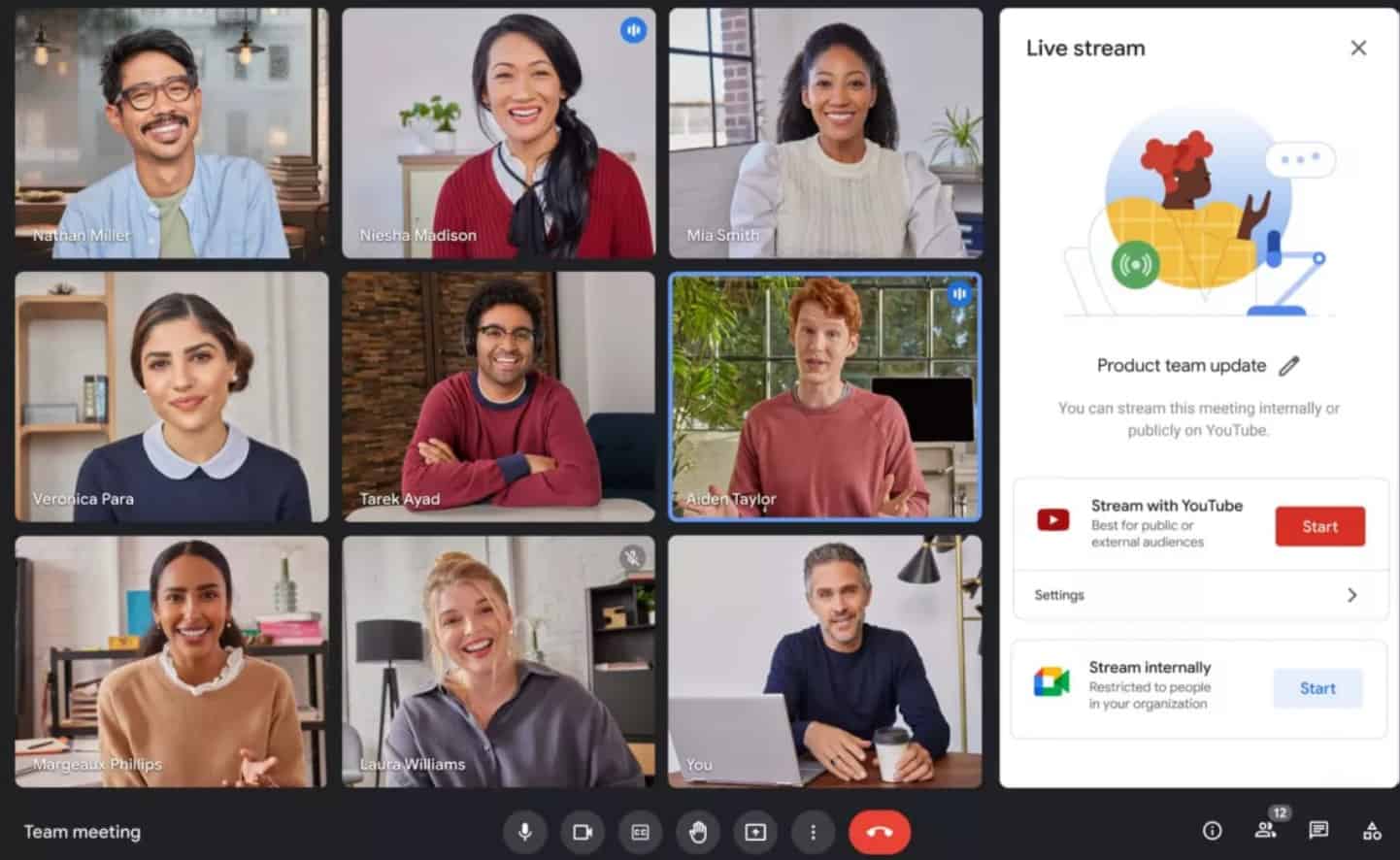What you need to know
- Google Meet gains a new livestreaming feature to YouTube.
- Admins of a meeting will be able to decide whether to enable streaming and if they’d like others in the meeting to stream, as well.
- This new live streaming began rolling out on July 21, with a more widespread rollout occurring within two weeks from July 25.
Google is broadening its video chatting app, Meet, with a new feature that’ll allow users to live stream meetings to YouTube.
It’s been a busy couple of days for Google Meet as the search giant just introduced a new anonymity feature for polls and questions. Google is now introducing a new feature that births more interactivity with its Meet application, already considered a go-to video conferencing platform. The service’s latest feature will allow users to decide to livestream meetings to their YouTube channels.
According to Google, an admin can enable this by navigating to the meeting’s Activities panel and selecting “Live Streaming.” You can then select your channel so you can begin streaming the meeting you’re holding.
Google explains that livestreaming “is useful in situations where you want to present information to large audiences outside of your organization, giving them the opportunity to pause and replay as needed, or view the presentation at a later time.”
There is a channel approval process for live streaming on YouTube. Google gives users a warning to let them know that their channel must be approved to livestream before they can do so through Google Meet. Its help page explains that when host management is on, only the host and co-hosts can begin livestreaming the meeting. If that option is off, anyone attending the meeting can start livestreaming it. Google also provides a privacy option if someone is interested in livestreaming the meeting.
A feature such as livestreaming a meeting seems like another way Google is looking to diversify and separate Meet from other platforms.
The new feature will be rolled out in stages. The first is “rapid release,” with the feature rolling out to select domains within three days beginning on July 21. The second will be for domains under a gradual “scheduled release” that may take up to 15 days beginning on July 25.

